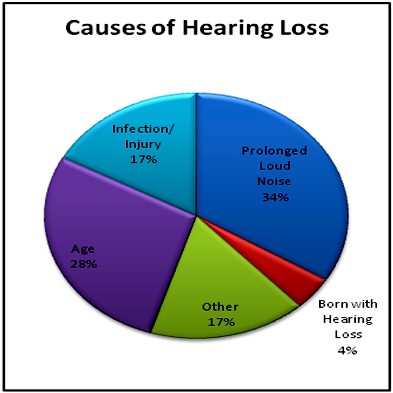Hearing Loss/Deafness
As per the medical science, doctors classify hearing loss in two broad categories.
- Conductive hearing loss
- Sensorineural hearing loss
Conductive hearing loss occurs when outer ear and middle ear are not able to conduct sound waves to the inner ear. In contrast, sensorineural hearing loss occurs when the inner ear malfunctions and is unable to convert sounds conducted to it into electrical impulses and send them on to the brain for processing and ‘making us hear’.
However, what happens when hearing loss is partially conductive and partially sensorineural? When that happens, we call it mixed hearing loss. The extent of hearing loss can be scientifically measured in an audiology lab. Depending on how bad it is, doctors grade it as either mild or moderate or severe.
causes
- Malformation of outer ear, ear canal, or middle ear structures
- Fluid in the middle ear from colds
- Ear infection
- Allergies
- Poor Eustachian tube function
- Perforated eardrum
- Benign tumors
- Impacted earwax
- Infection in the ear canal
- Foreign body in the ear
- Otosclerosis
Preventing hearing loss
- Use headphones that block out more outside noise, rather than turning up the volume. You can buy add-ons for your existing headphones that block out more outside noise, or noise cancelling headphones.
- Use ear protection equipment such as ear muffs or ear plugs if you work in a noisy environment, such as a pub, nightclub, a garage workshop or on a building site. It’s important to insert ear plugs correctly to gain the benefit of wearing them.
- Use ear-protection equipment at loud concerts and at other events where there are high noise levels, such as motor races.
- Don’t insert objects into your ears or your children’s ears. This includes fingers, cotton buds, cotton wool and tissue.


